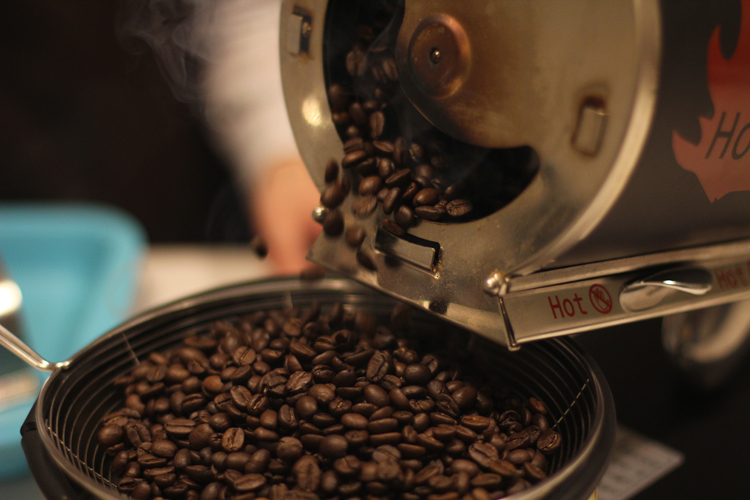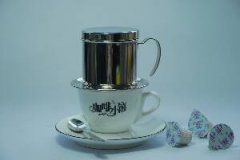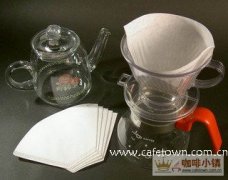Junior coffee roasters must see the introduction to roasting practice.
Without the taste of baking, it is impossible to appear in the cup; as for cooking, it is a means to avoid the disadvantages of baking.' This is a view that all coffee experts will agree with, but what happened to the coffee beans during the baking process? What does the so-called first explosion and the second explosion mean? Now let's learn about baking from the beginning.

Why bake your own coffee beans? Because this is the best way to enjoy the freshness of coffee beans! The importance of freshness has been emphasized at the beginning of this book, and if you have ever compared it, you should know how fresh coffee beans make a difference in the flavor of brewed coffee. But is it really just for the freshness of coffee beans to bake yourself? Because there are already many domestic coffee manufacturers offering fresh baked beans (including through the Internet), fresh to wait for you to confirm the order before baking in the pot, usually when you receive it less than 24 hours after the pot! So what attracts us to bake at home?
I think the main reason is that you can create your own unique flavor by baking yourself. In addition, self-baking can greatly reduce the cost of drinking coffee. At present, a pound of roasted high-end coffee beans on the market costs about 350 yuan to 450 yuan (the high-quality coffee beans here refer to fine coffee, not ordinary coffee, which costs as little as 200 yuan 250 yuan per pound). But the price of raw coffee beans per pound is only about 180,250 yuan, and these are still the price of one pound at a time, if you buy more, the price will be even lower! So the cost can be about 1/2 lower than roasted coffee beans, as long as you pay a little more time, which is very cost-effective in either way.
From the cost point of view, self-baking is the best investment for cafes to reduce operating costs, because the amount of coffee beans needed for business is quite large, and when buying raw beans in this quantity, the unit price will naturally be lower. You can recover the cost of the business baking machine in about half a year, and you can also boast fresh self-baking and selling roasted coffee beans at the same time. The guarantee is to kill a few birds with one stone (but only if the coffee beans are roasted well)!
It's easier than you think.
Baking coffee beans can be said to be a simple and difficult thing, because as long as you can turn on the gas stove or plug into a socket, you can already bake coffee beans; it is difficult because it takes a lot of time and experience to bake coffee beans just right. In other words, it's easy to bake coffee beans, but it's not easy to bake coffee beans well. But generally speaking, baking is much easier than you think. In fact, before World War II, the vast majority of coffee beans were roasted at home, and then because of the popularity of large-scale commercial baking, so people gradually forget that roasting coffee beans is actually a very common thing.
In some countries where coffee beans are produced, the coffee served to guests is still freshly baked and brewed to show the host's most sincere welcome. So there is no need to worry that the coffee beans you bake are not good enough, at least, the freshness alone is enough to surpass the products of most brands on the market. As for the other tricks of baking beans can be mastered by practicing a few more times, and through your own baking process, you can quickly find out your own coffee taste, you can rest assured to start! Especially for those who have great enthusiasm for coffee, joining the world of baking is definitely the only way to improve the attainments of coffee!
The process of baking
To put it simply, baking is the direct heating of the baking. Unlike cooking, you don't need oil, water, salt or sugar to bake. Just put the raw coffee beans in a heat-resistant container, then heat them on the fire, stir the coffee beans constantly while heating, so that each bean is heated evenly, and then stop heating when we reach the desired level. In fact, the whole process is a bit like barbecue, except that the roasted things are coffee beans.
The process of roasting coffee from raw beans to ripe beans is quite dramatic. without roasting, coffee will not have the aroma we know, nor will it bloom complex taste buds, and it will certainly not be as popular as it is now. Coffee beans smell like raw grass before they are roasted, and some dried raw beans even have a bad smell of fermentation! The process of roasting raw beans into ripe beans becomes "caramelization". In the process of caramelization, the sugars, fats, proteins and amino acids in coffee beans. Substances such as these begin to interact and combine, and the result is from more than 200 substances at the beginning to more than 800 substances in the end, such as the well-known aroma of coffee, which is similar to melanin after caramelization.
The first explosion: raw coffee beans generally contain about 10% moisture, which will be the first thing to run out of coffee beans when baking begins, so this stage is called dehydration at the beginning. As the temperature rises gradually, the gas and water inside the coffee bean will begin to put pressure on the cell wall because it is about to escape. When the pressure accumulates to 2025 atmospheric pressure, it will break through the cell wall, and then you will hear the sound of bursting. We call this stage the 'first explosion' and the temperature at this time is about 190 degrees Celsius. Because each baking is in batches, some beans will crack earlier; others will be later, so there must be sporadic popping at first, and then the sound will gradually dense. finally, it becomes sparse and even ends (it is recommended to record the time of start and end). At this time, the color of coffee beans is no longer the khaki at first, but a lighter brown color. Ordinary coffee beans are roasted at least to this extent before starting the pot. We call this roasting degree 'light roasting'.
The second explosion: the temperature at the end of the first explosion will be about 205 degrees, and then as the heating continues, the temperature continues to rise, the color of the coffee beans will gradually become darker, and the coffee beans will burst when the temperature reaches 230 degrees Celsius. This is the second explosion. The sound of the second explosion is small and the frequency is relatively high, which is different from the first explosion. At the same time, the film on the surface of the coffee bean will fall off, the color of the coffee bean entering the second explosion will be darker, and the surface will begin to shine.
Deep roasting: after the end of the second explosion, the coffee beans become oily black, and there will be a lot of smoke. If the house is equipped with a smoke detector, it is best to turn off the alarm first, so that the whole building will know that you are making coffee! At this point, the temperature is usually less than 240 degrees Celsius, and if you want to do further deep roasting, you have to raise the temperature to more than 240 degrees, when the surface of the coffee beans will become almost black and look very greasy. And this is probably the limit of the baking depth of coffee beans, which ensures that the coffee beans will burn up and become authentic freshly roasted coffee beans.
The time to stop baking
When do you want to stop baking? It can be judged from the following points:
1. Coffee bean color: because coffee beans show different colors when roasted to different degrees, color becomes the most commonly used basis for baking depth. This method can be applied to most coffee beans, but some coffee beans are special. For example, Kenya beans are much darker than ordinary coffee beans, so you should pay special attention at this time.
two。 Baking time
3. Baking temperature
4. Smoke intensity: coffee beans begin to smoke after entering the second explosion, and the degree of roasting can be judged by the smoke, but because the characteristics of each kind of coffee beans are different, you must accumulate long-term baking experience before you can correctly decide when to stop baking.
In fact, the best time to stop baking is just before reaching the desired baking depth, because the coffee beans will continue to bake because of their own heat, so if the time to stop baking is not earlier, the coffee beans will exceed the predetermined baking level.
Time / temperature curve
When baking, it is recommended to record the corresponding temperature at regular intervals, with intervals ranging from 30 seconds to 60 seconds according to personal habits. In addition to temperature, records such as the start and end time of the first and second explosions are also indispensable. According to these data, we can sort out a 'time-temperature' corresponding curve, which is an important reference data for baking. as long as you control the firepower, you can change the slope of the curve (that is, the rate of temperature rise). On the other hand, the coffee beans baked with different slopes have more flavor-even the same batch of beans. So if you are not satisfied with the taste of this baking, you can according to the recorded temperature-time qu
The last procedure of baking is forced cooling, and the simplest thread is modified slowly to the taste you are most satisfied with.
Experience tells us that when the baking time is lengthened with less firepower, the taste will be softer and many of the water chestnuts will be sharpened, while the shorter baking time will have excellent aroma performance and the features will be more easily highlighted. In fact, there is no so-called absolutely correct baking time, the choice depends entirely on personal preferences, as long as baking a few times to find out the most suitable time for you.
Forced cooling
The way is to blow with an electric fan (remember which gear is the strongest) and blow away the remaining bean skins while carrying out forced cooling, killing two birds with one stone. Remember not to let the coffee beans cool naturally, or they will taste poor.
In addition to simply blowing with an electric fan, if the baking quantity is large, you can also cooperate with the sprayer, using the sprayer to spray some water to help cool down, but in this way, you must pay attention to the amount of water, too much water makes the coffee beans wet and easy to mildew. In fact, unless there is a lot of baking at one time, the electric fan is enough. In fact, large bakeries also use air conditioners to cool them, which avoids the problems caused by water cooling.
After the coffee beans are completely cooled, even if the whole baking process is completed, usually the roasted coffee beans will be about doubled in volume, and the weight will be reduced by 15% to 20%. After the roasting is completed, the roasted coffee beans are properly preserved. Take it out at the right time and review your baking results by the way.
Let the flavor develop and mature-- raising beans
I don't know if you have noticed that after putting the roasted fresh coffee beans into a sealed can, the lid will pop open the next day with a bang, as if there was a pressure to push the lid out. That is the accumulation of carbon dioxide, another product of baking beans. Roasting one kilogram of coffee beans will produce 12 kilograms of carbon dioxide, and the coffee beans will continue to emit carbon dioxide after baking. This is the source of pressure in the sealed jar, and this discharge will last for another two or three days. While emitting carbon dioxide, the flavor of coffee beans is also developing. When coffee beans emit about the same amount of carbon dioxide, the flavor is ripe enough to taste.
Therefore, do not rush to drink the coffee beans that have just been baked, because at this time the coffee will not be able to show its own characteristics because of its immature development. You should keep the coffee beans in a proper environment for three or four days before tasting them. Only in this way can you enjoy the complete flavor of the coffee. We call this action 'bean cultivation'. In fact, in our experience, the growing period of many coffee beans is nearly a week, or even more than ten days, before which the taste may not be complete. Of course, you can also ignore the matter of growing beans and cook them every day after baking. After a few cycles, you can better understand the flavor development of the coffee beans.
Important Notice :
前街咖啡 FrontStreet Coffee has moved to new addredd:
FrontStreet Coffee Address: 315,Donghua East Road,GuangZhou
Tel:020 38364473
- Prev

The method of making coffee in Vietnamese pot (illustration)
Vietnam pot production method diagram 1, add a cream ball or a little condensed milk to the coffee cup: 2, take out the small lid of the Vietnamese pot: 3, add two tablespoons of coffee powder (about 10-12g): 4, put on the small lid of the Vietnamese pot, and tighten: 5, add hot water of about 95 degrees, pour evenly over the coffee powder: 6, let the water flow slowly through the coffee powder for about 3 minutes.
- Next

The method of making coffee by hand drip filter (illustration)
The principle and equipment of the handbag is very simple. A good cup of coffee can be made with only a filter cup, a hand pot, a piece of filter paper and a cup. Even in the coffee filter method, you only need to prepare a special piece of filter paper to make a cup of coffee. Although the handbag looks simple and the cooking process is not as magical as the plug and mocha pot, there is a problem when you pick up the equipment for coffee for the first time.
Related
- Beginners will see the "Coffee pull flower" guide!
- What is the difference between ice blog purified milk and ordinary milk coffee?
- Why is the Philippines the largest producer of crops in Liberia?
- For coffee extraction, should the fine powder be retained?
- How does extracted espresso fill pressed powder? How much strength does it take to press the powder?
- How to make jasmine cold extract coffee? Is the jasmine + latte good?
- Will this little toy really make the coffee taste better? How does Lily Drip affect coffee extraction?
- Will the action of slapping the filter cup also affect coffee extraction?
- What's the difference between powder-to-water ratio and powder-to-liquid ratio?
- What is the Ethiopian local species? What does it have to do with Heirloom native species?

